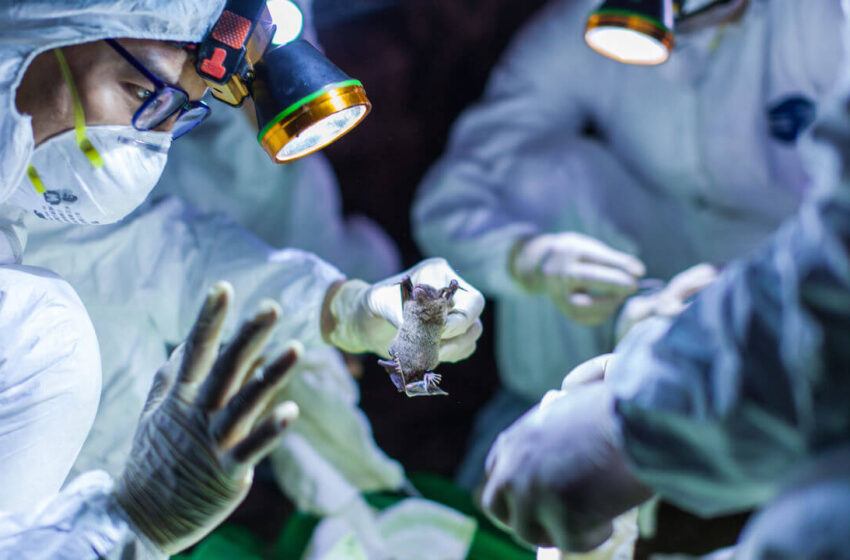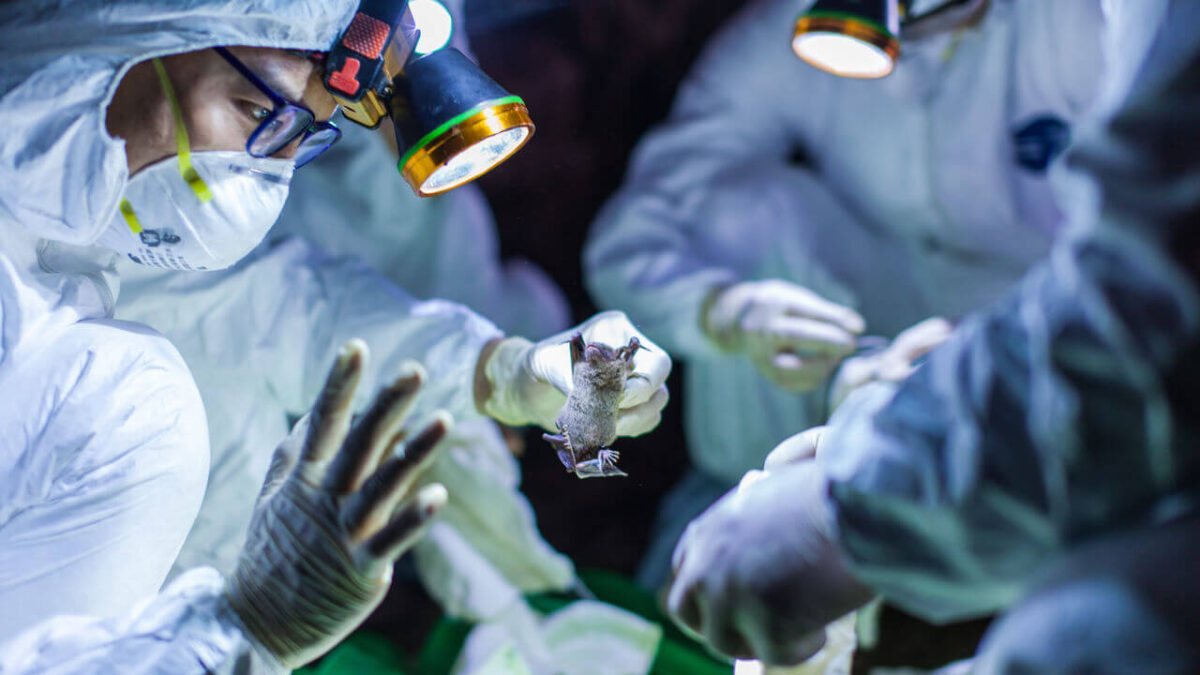COVID-19: A lesson from the 1918 pandemic

By Ezinwanne Onwuka
The COVID-19 pandemic is without a doubt an enormous and unique challenge worldwide, and the battle is nowhere near to being over. COVID-19 infection rates continue to skyrocket, with the number of new cases rising. To date, about 1.25 million people have been confirmed to have COVID-19 worldwide, with about more than 66,000 deaths. The Nigeria Centre for Disease Control (NCDC) report an upsurge in the number of cases and a spike in deaths across the country each day.
As devastating as the current COVID-19 pandemic may be, the Spanish flu pandemic remains the worst in world history. It remains the deadliest public health event in recorded history. Spanish flu was more infectious than COVID-19, caused symptoms much faster and was far more deadly. And unlike COVID-19, which poses the greatest risk to the elderly, Spanish flu targeted the young.
The 1918 pandemic is the most severe pandemic in history. The flu hit during a pivotal stage of World War 1. The pandemic affected everyone. With one-quarter of the US and one-fifth of the world infected with the influenza, it was impossible to escape from the illness. At the time, there were no effective drugs or vaccines to curtail this killer flu strain.
Despite the fact that the 1918 flu was not isolated to one place, it became known around the world as the Spanish flu. It was dubbed the Spanish flu because it was thought at the time to have originated in Spain. Research published in 2005 suggest it actually originated in New York. Because Spanish news sources were the only ones reporting on the flu, many believed it originated there.
The Spanish flu pandemic of 1918, the deadliest in history, infected an estimated 500 million people worldwide – about one-third of the world’s population – and killed an estimated 20 million to 50 million victims. Generally speaking, the fatality rate for the Spanish flu is calculated at about 2%.
Initial symptoms of the illness included a sore head and tiredness, followed by a dry, hacking cough; a loss of appetite; stomach problems; and then, on the second day, excessive sweating. Next, the illness could affect the respiratory organs, and pneumonia could develop.
When the 1918 flu hit, doctors and scientists were unsure what caused it or how to treat it. Government officials imposed quarantines, banned public gatherings and shut down public places, including schools, churches and theaters. Citizens were mandated to wear facemasks, advised to avoid shaking hands and to stay indoors. Furthermore, stores could not hold sales, funerals and marriage ceremonies were limited to 15 minutes with a limited number of persons.
One reason the Spanish flu was so lethal was that there were no antibiotics to treat secondary bacterial infections. With no vaccine to protect against influenza infection and no antibiotics to treat secondary bacterial infections that can be associated with influenza infections, control efforts worldwide were limited to non-pharmaceutical responses such as isolation, quarantine, good personal hygiene, use of disinfectants, and limitations of public gatherings, although then as now, they were applied unevenly.
By the summer of 1919, the flu pandemic came to an end, as those that were infected either died or developed immunity. Almost 90 years later, in 2008, researchers announced they had discovered what made the 1918 flu so deadly: a group of three genes enabled the virus to weaken a victim’s bronchial tubes and lungs and clear the way for bacterial pneumonia.
Since 1918, there have been several other pandemics, although none as deadly. A flu pandemic from 1957 to 1958 killed around 2 million people worldwide and a pandemic from 1968 to 1969 killed approximately 1 million people.
The novel coronavirus pandemic of 2020 is spreading around the world as countries race to find a cure for the virus which is particularly deadly because many carriers are asymptomatic for days before realizing they are infected.
One commonality between the Spanish flu and COVID-19 is that both are considered “novel,” which is to say, they are so new that nobody in either era had any immunity to them. Additionally, there were no vaccines for the Spanish flu as there are currently no vaccines for COVID-19. Despite these similarities, it should be emphasized that there is a significant difference between the two pandemics. The COVID-19 is not an influenza, it is more like a chronic acute pneumonia. They are both caused by novel viruses; viruses with different methods of action and infectiousness.
There are lessons to be learned from what happened a century ago. True, there are differences between then and now. The world had far less medical and scientific knowledge. And it was an entirely different virus. But striking similarities exist between how we reacted to the pandemic in 1918, and how we are responding now.
In both pandemics, the most effective immediate response was – and is – social distancing. It was called ‘crowding’ control in 1918. But whatever you call it, social distancing measures worked in 1918 – and, undoubtedly, it works today. The faster comprehensive closures and social distancing are put into place, the quicker a pandemic can be brought under control.
Those who lived through the Spanish flu learned that lesson the hard way.
Two studies published in 2007 in the Proceedings of the National Academy of Sciences looked at the effect of health measures in more than 15 cities in 1918, including mask laws, business-hour restrictions, and the shuttering of schools, theaters, churches and eateries. Both studies found that cities that acted earliest and most forcefully – like St. Louis, which imposed a near total lockdown within two days of its first Spanish flu case – had much lower peak death rates than cities that hedged their bets – like New Orleans, Boston and Philadelphia.
Philadelphia’s response was too little, too late. Dr. Wilmer Krusen, director of Public Health and Charities for the city then, insisted mounting fatalities were not the “Spanish flu,” but rather just the normal flu. So, on September 28, the city went forward with a Liberty Loan parade attended by tens of thousands of Philadelphians, spreading the disease like wildfire. In just 10 days, over 1,000 Philadelphians were dead, with another 200,000 sick. Only then did the city close saloons and theaters. By March 1919, over 15,000 citizens of Philadelphia had lost their lives.
The case was different in St. Louis and San Francisco, among others. In St. Louis, schools and movie theaters closed and public gatherings were banned. Consequently, the mortality rate in St. Louis was just one-eighth of Philadelphia’s death rate during the peak of the pandemic. Citizens in San Francisco were fined $5 – a significant sum at the time – if they were caught in public without masks and charged with disturbing the peace.
The point is not that social distancing is a total panacea, but that there is no business-as-usual during a pandemic. If the past offers us any perspective into the future, it is this: All of us must continue to combat COVID-19 with facemasks and social distancing in public. Recent studies show facemasks, along with hand sanitation and social distancing by a majority of the population, can quickly bring this pandemic under control.
The lesson from 1918 is clear: The Spanish flu tells us that wearing masks and, most especially, social distancing works. And it works best if we act early, act fast and stick together – and base our decisions not on social or economic concerns, but on science, data and facts.
The good news is that pandemics do end. Sometimes with seemingly unbearable numbers of death, but eventually they do end.




